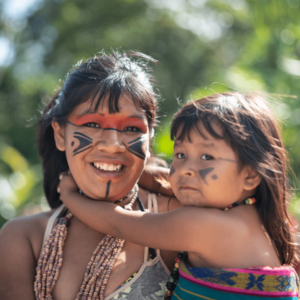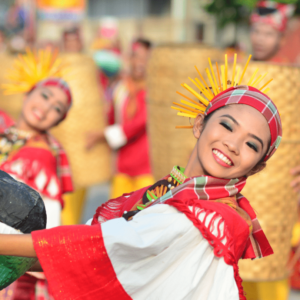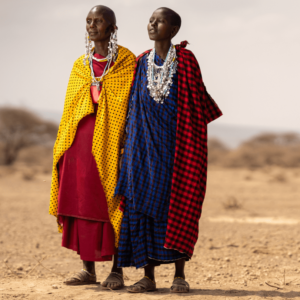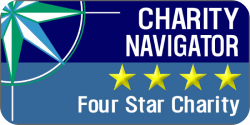Indigenous peoples live across the world on around 22% of the global land area. Some estimate the number of indigenous peoples at 476 million across 90 different countries. While their populations make up under 5% of the world’s population, they represent the greater part of the world’s cultural diversity – around 5,000 distinct cultures. Indigenous peoples across the globe speak an estimated 7,000 unique languages and many continue to follow their traditional practices and ancestral ways of life.
Despite vast differences between groups in language, tradition, and culture, Indigenous peoples share common challenges regarding the protection of their rights as distinct peoples. Indigenous peoples have advocated and fought for recognition of their cultural identities, traditional ways of life, and their right to ancestral lands, territories, and natural resources throughout history. These rights, however, have been and largely continue to be violated. Today, Indigenous peoples across the world are among some of the most vulnerable and disadvantaged groups of people – accounting for 15% of the world’s poorest groups – as they continue to face marginalization, lack of representation, and human rights violations.
Many Indigenous peoples face ongoing social, health, and economic crises due to the lasting effects of colonization or because of difficulty coping with a constantly and drastically changing world. To bring attention to the issues they face, The International Day of the World’s Indigenous Peoples is celebrated annually on August 9th across the world. This day marks the anniversary of the 1982 inaugural session of the Working Group on Indigenous Populations. This day is a reminder that Indigenous Peoples have a right to make their own decisions about their cultures and communities in ways that are meaningful and culturally appropriate to them.
 Indigenous children and youth hold vital knowledge and important perspectives as they have inherited profound understandings of Indigenous identity, cultural heritage, and traditional connections to their ancestral lands and natural environment. At the same time, many Indigenous youth face substantial challenges because of the intergenerational effects of colonization and years of discriminatory and often unjust policies, resulting in a constant battle to ensure their rights and cultural identities.
Indigenous children and youth hold vital knowledge and important perspectives as they have inherited profound understandings of Indigenous identity, cultural heritage, and traditional connections to their ancestral lands and natural environment. At the same time, many Indigenous youth face substantial challenges because of the intergenerational effects of colonization and years of discriminatory and often unjust policies, resulting in a constant battle to ensure their rights and cultural identities.
This year’s International Day of the World’s Indigenous Peoples – under the theme of “Indigenous youth as agents of change for self-determination” – advocates for Indigenous youth participation in decision-making. Indigenous youth around the world are acting as agents of change at the front lines of many of the most important issues facing humanity today, including climate change and social justice. In many places around the world, ways of living for Indigenous youth are changing due to evolving social, cultural, political, and economic contexts in ways that may make them vulnerable to risks such as discrimination or social isolation. For example, Indigenous youth are often forced to choose between maintaining their roots in their communities and pursuing education and stable employment in cities far away from the places they call home. Further, when pursuing education, Indigenous youths are unable to access a curriculum that is culturally appropriate, often excluding Indigenous knowledge, languages, and cultural realities, isolating them from their communities. Due to this and a variety of other reasons, Indigenous youth are more vulnerable to challenges such as lack of culturally appropriate education in their own languages, discrimination, forced relocation and loss of land, incarceration and lack of legal protection, lack of access to healthcare and other social services, malnutrition, and higher rates of suicide and self-harm.
Despite struggling with the above challenges, Indigenous youth are organizing themselves in youth organizations, collectives, and solidarity networks across the world both in their communities and virtually to improve their conditions, promote their cultural identities, and fight for their rights to be both acknowledged and respected. Indigenous youths have been dedicating their efforts to causes like climate change, and social justice, and building pathways to strengthen their communities to keep their culture, traditions, and contributions alive. Through social mobilization, Indigenous youth are sharing their stories and promoting their cultural identities, leading to more widespread awareness of issues facing Indigenous peoples around the world.
Today’s young people hold the power to change the world. To allow for new and fresh ideas with the ability to transform our current social, environmental, political, and economic systems for the better, it is vital that youth participation in leadership and decision-making is not only encouraged but also supported.
 Indigenous youth continue to face marginalization and are left out of important conversations; however, they often have a sense of belonging and a strong cultural identity that puts them in a unique position to advocate for positive system change as they possess lived experience and a deeper understanding of the ways in which our current systems could be made more just and inclusive. This lived experience fosters resilient and powerful individuals informed by a rich cultural history and vast traditional knowledge, particularly focused on environmental stewardship. For example, Indigenous youth are taught by their families, communities, and elders to carry out activities from land management and agriculture to shepherding and household chores. These practices teach them to care for their communities and also for their natural environment, providing them with an intimate understanding of the land and biodiversity.
Indigenous youth continue to face marginalization and are left out of important conversations; however, they often have a sense of belonging and a strong cultural identity that puts them in a unique position to advocate for positive system change as they possess lived experience and a deeper understanding of the ways in which our current systems could be made more just and inclusive. This lived experience fosters resilient and powerful individuals informed by a rich cultural history and vast traditional knowledge, particularly focused on environmental stewardship. For example, Indigenous youth are taught by their families, communities, and elders to carry out activities from land management and agriculture to shepherding and household chores. These practices teach them to care for their communities and also for their natural environment, providing them with an intimate understanding of the land and biodiversity.
Indigenous youth of today are the future spokespersons for and leaders of their communities. They are water protectors, land defenders, and biodiversity conservation leaders. They are social movement artists, digital media entrepreneurs, and cultural and language preservationists. They are promoting Indigenous agriculture and sustainable food systems, HIV and health awareness, youth suicide prevention, and child and youth sexual exploitation. Indigenous youth, despite facing barriers, are fighting for system change, and in many parts of the world, they are succeeding.
Indigenous youth are combining their traditional and cultural knowledge with scientific knowledge to harness new technologies and develop new skills to pave the way for a more sustainable and just future for coming generations. This allows them the capacity to provide important insights and inform debates on climate action related to the “green transition.” For example, Indigenous youth can provide added perspective on green technologies such as resource extraction and hydroelectric dams which might harm Indigenous communities or leave them more vulnerable and thus, must be included in decision-making. Their representation and participation in global decision-making on issues like climate change mitigation and creating more just systems are also vital for the ability of Indigenous youth to become agents of change for their own self-determination.
 IIRR is supporting Indigenous peoples and young people in rural areas through various initiatives such as the Biodiversity and Community Resilience in the Omo Valley (BIOM) project. Funded by USAID and launched in December 2022, the BIOM project is an indigenous people’s rights, advocacy, biodiversity, and livelihood resilience-building project. One of the first activities of the project was the inauguration of the new Tama Plains Community Conservation Area, a legally distinct location managed by local, indigenous communities for conservation, tourism, and cultural purposes. Projects such as BIOM demonstrate IIRR’s commitment to supporting all rural communities and prioritizing local voices in planning and leadership.
IIRR is supporting Indigenous peoples and young people in rural areas through various initiatives such as the Biodiversity and Community Resilience in the Omo Valley (BIOM) project. Funded by USAID and launched in December 2022, the BIOM project is an indigenous people’s rights, advocacy, biodiversity, and livelihood resilience-building project. One of the first activities of the project was the inauguration of the new Tama Plains Community Conservation Area, a legally distinct location managed by local, indigenous communities for conservation, tourism, and cultural purposes. Projects such as BIOM demonstrate IIRR’s commitment to supporting all rural communities and prioritizing local voices in planning and leadership.
IIRR is a non-profit organization whose mission is to empower rural people to build resilient communities and attain socioeconomic equity through creative and community-led action.
For media inquiries or requests for speakers, please email comms@iirr.org.
Sources:
https://www.unesco.org/en/international-day-worlds-indigenous-peoples
https://social.desa.un.org/sites/default/files/Concept%20Note%20Intl%20Day%202023_3.pdf





This is a very helpful website for indigenous people and practitioners. I am looking forward to more robust collaboration, that will foster development for local people in Nigeria. Thank you.